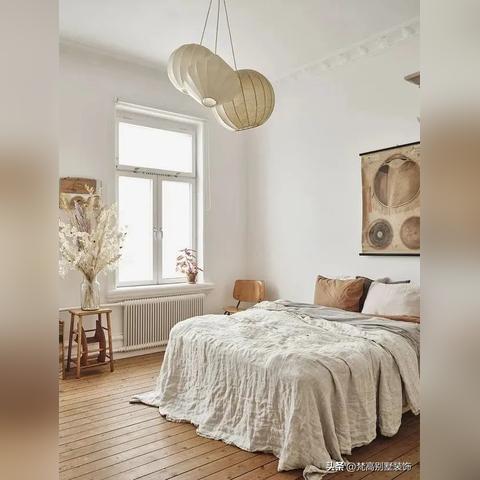Stabilizing Colors in Textiles:A Comprehensive Guide
"Stabilizing Colors in Textiles: A Comprehensive Guide" is an in-depth guide on how to stabilize colors in textiles. The guide covers a wide range of topics, including the importance of color stabilization, different types of color stabilization methods, and their applications in various industries. It also provides practical tips and techniques for achieving optimal color stability in textiles, such as using appropriate dyes and chemicals, proper processing techniques, and monitoring the quality of the final product. Overall, this comprehensive guide aims to help textile professionals achieve better color stability in their products, ensuring consistent quality and customer satisfaction.
Introduction to Textile Color Stabilization
Textile color stabilization is a crucial step in the manufacturing process that ensures the longevity and consistency of colors on clothing, home textiles, and other applications. The process involves treating fabrics with chemicals or heat to prevent fading, bleeding, or discoloration over time. In this guide, we will explore the different methods used for color stabilization and provide practical examples from industry professionals.

Chemical Stabilization
Chemical treatments are the most common method used for color stabilization. They involve applying dyes or pigments that react with the fibers to create a stable layer that resists fading. These treatments can be applied during the dyeing process or after the fabric has been washed. Some common chemicals used for color stabilization include:
- Dyes: These are organic compounds that bind to the fibers and impart color. Dyes can be natural (like indigo) or synthetic (like reactive dyes).
- Pigments: These are inorganic compounds that provide color to the fabric. Pigments can be metallic (like silver) or non-metallic (like titanium dioxide).
- Fixatives: These are chemicals that help stabilize the dye by binding to the fibers and preventing it from leaching out during washing.
Industry Practices
To illustrate chemical stabilization, let's consider a case study from the fashion industry. A high-end fashion brand was looking to produce a line of sustainable clothing using organic materials. To achieve this, they decided to use a combination of chemical and natural colorants for their fabrics.
The company partnered with a local supplier of plant-based dyes and pigments. These dyes were derived from plants and had low environmental impact. The supplier also provided a custom-made fixative formula designed to work specifically with the fabrics being produced.
The resulting fabric showed excellent color stability, with no noticeable fading or bleeding even after multiple washes. This approach not only met the brand's sustainability goals but also ensured that their products remained visually appealing for many years to come.
Heat Stabilization
Heat stabilization is another effective method for preserving color in textiles. It involves treating fabrics with heat to activate the dyes or pigments and create a more durable bond between the fibers and the color. This technique is commonly used in industrial settings where large volumes of fabric need to be treated.
Practical Example:
A textile company in China produces a range of high-quality sportswear using cotton fabrics. To ensure consistent color across their products, they implemented a heat stabilization process. The company's engineers developed a specialized heat treatment process that involved heating the fabric at specific temperatures for a short period of time.
After this treatment, the fabric showed excellent resistance to fading and bleeding, even under harsh conditions like washing and exposure to sunlight. This heat stabilization process not only improved the quality of their products but also helped them meet the demands of international markets that require high levels of color consistency.
Conclusion
In conclusion, color stabilization is an essential process in the textile industry that ensures the longevity and consistency of colors on clothing, home textiles, and other applications. Chemical and heat stabilization techniques are widely used, and there are many practical examples from industry professionals that demonstrate their effectiveness. By understanding these techniques and applying them correctly, textile manufacturers can produce products that meet the needs of consumers while also promoting sustainability and environmental responsibility.
纺织品固色的重要性
在日常生活中,我们经常需要处理各种纺织品,包括衣物、床单、窗帘等,固色不仅是为了保持纺织品的颜色持久,更是为了保护纺织品免受日常磨损和污渍的影响,正确的固色方法对于提高纺织品的使用寿命和美观度至关重要。
纺织品固色的方法
了解纺织品的基本性质
在固色纺织品时,首先要了解纺织品的材质和颜色特性,不同的纺织品材质和颜色对固色的要求不同,因此需要根据具体情况选择合适的固色方法。
添加固色剂
为了固色纺织品,可以添加一些专门的固色剂,常见的固色剂包括染料、活性炭、氧化剂等,在选择固色剂时,需要考虑其颜色稳定性、耐久性以及与纺织品的兼容性。
使用固色技巧
除了添加固色剂外,还可以采用一些固色技巧来提高固色效果,可以使用织物处理技术来增强织物的抗污性和耐久性;或者使用特殊的洗涤程序来帮助纺织品更好地吸收和固定颜色。
案例说明:纺织品固色的实际应用
以下是一个纺织品固色的实际应用案例:
衣物固色
假设有一件棉质衬衫,其颜色容易褪色,为了固色,可以采取以下措施:首先了解该衬衫的材质和颜色特性,然后添加适量的染料作为固色剂,还可以使用织物处理技术来增强衣物的抗污性和耐久性,经过一段时间的使用后,该衬衫的颜色更加持久,不易褪色。
窗帘固色
窗帘是家居装饰中重要的部分,为了保持窗帘的颜色美观且持久,可以采取以下措施:首先了解窗帘的材质和颜色特性,然后选择合适的固色剂和织物处理技术,还可以使用特殊的洗涤程序来帮助窗帘更好地吸收和固定颜色,经过一段时间的使用后,窗帘的颜色更加鲜艳且不易褪色。
纺织品固色的表格说明(辅助说明)
以下是关于纺织品固色的表格说明:
| 类别 | 描述 | 示例材料 | 固色方法 | 注意事项 |
|---|---|---|---|---|
| 基本性质 | 了解纺织品的材质和颜色特性 | 棉质衬衫、窗帘等 | 添加固色剂、织物处理技术等 | 根据材质和颜色特性选择合适的固色方法 |
| 添加固色剂 | 染料、活性炭、氧化剂等 | 根据需求选择合适的固色剂 | 根据具体情况选择合适的固色剂类型和用量 | 注意选择具有良好颜色稳定性和耐久性的固色剂 |
| 技巧应用 | 使用织物处理技术增强抗污性和耐久性 | 无特定说明 | 根据织物处理技术的具体方法和效果选择是否应用 | 应用织物处理技术可以提高固色的效果和持久性 |
| 应用实例 | 衣物固色、窗帘固色等 | 根据具体情况选择材料和用途 | 根据实际情况选择合适的固色方法和措施 | 注意根据实际情况选择合适的材料和用途 |
纺织品固色对于提高纺织品的使用寿命和美观度至关重要,在处理纺织品时,需要根据纺织品的材质和颜色特性选择合适的固色方法,并注意使用适当的固色技巧,在实际应用中,还需要根据具体情况选择合适的材料和用途,通过正确的固色方法和技术,可以有效地提高纺织品的颜色持久性和美观度。
Articles related to the knowledge points of this article:
Top Picks for Shanghai Home Textile Essentials
Mastering Photoshop for Editing Textiles A Comprehensive Guide
The Fabric of Success:Navigating the World of Nantong Anton Textiles
A Journey into the World of Fabrics with Laughing Leaf Textiles
Embracing Innovation in Textiles:The Story of Jinde Noble Textiles



